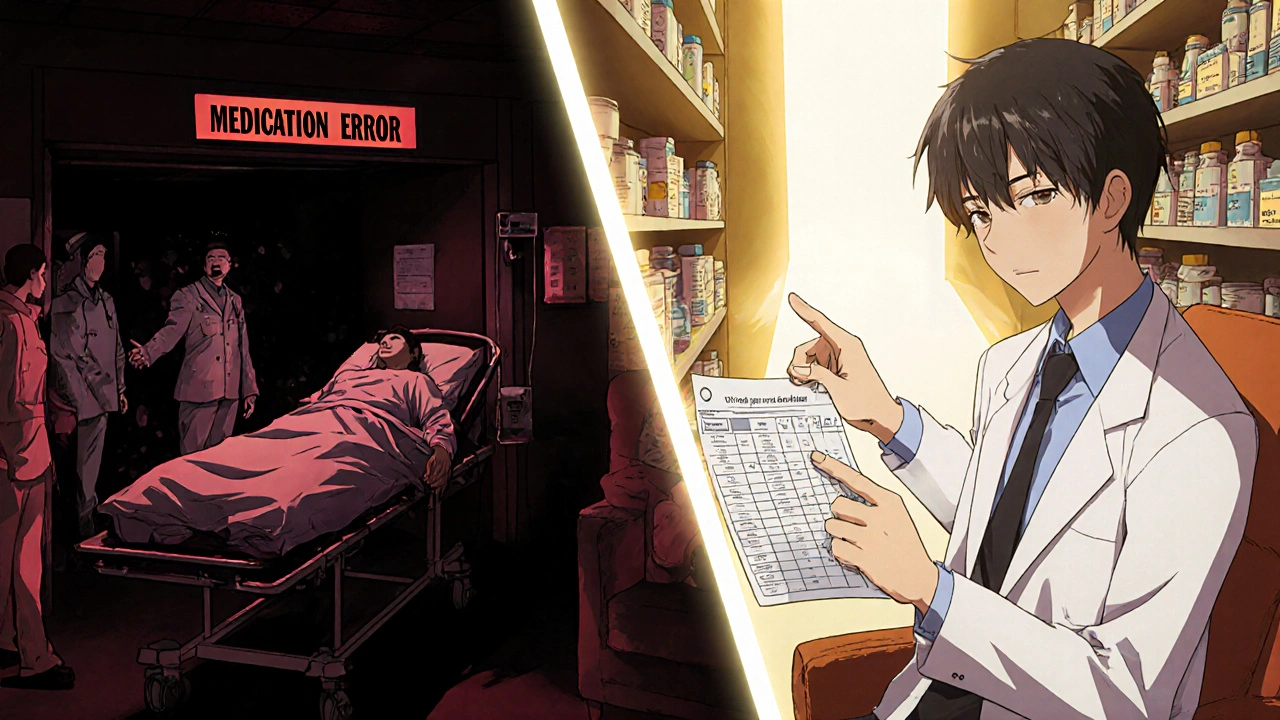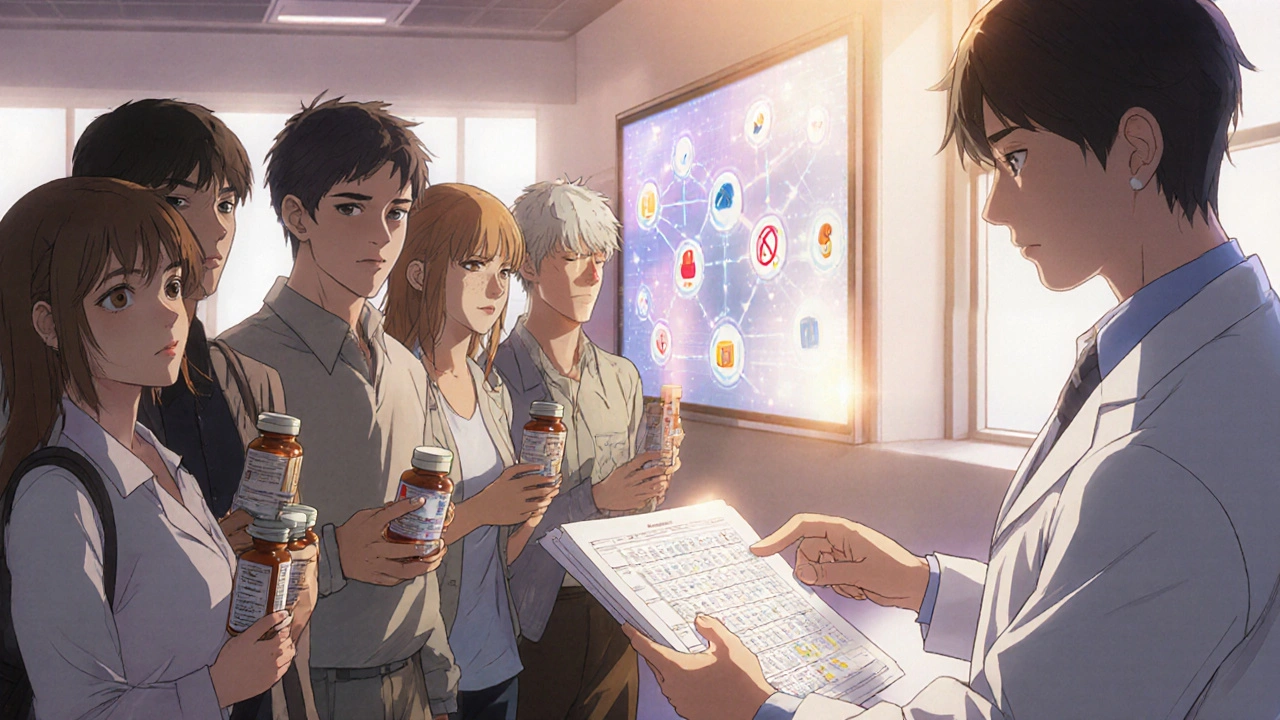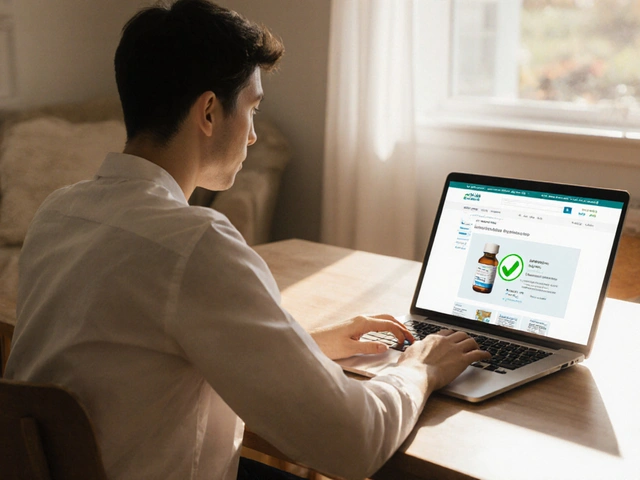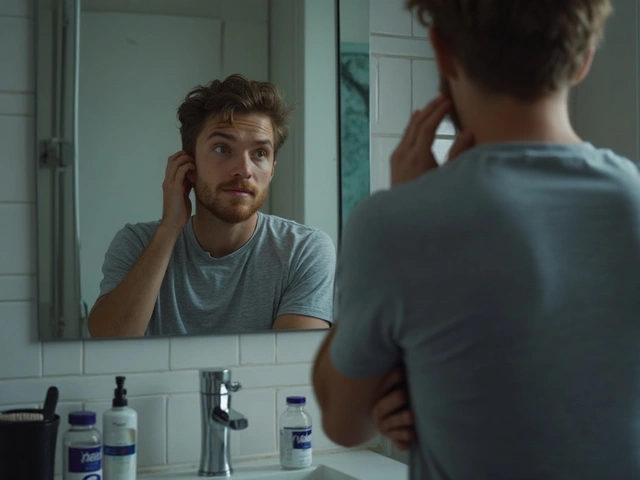Every year, medication errors send over 1.3 million people to emergency rooms in the U.S. - and most of these mistakes happen because someone didn’t catch a dangerous interaction, wrong dose, or duplicate prescription. You don’t need to wait for a hospital visit or a doctor’s appointment to stop one of these errors. Your local pharmacy already has the tools, the time, and the training to help - if you know how to ask.
What a Pharmacy Consultation Actually Does
A pharmacy consultation isn’t just about picking up your pills. It’s a 15-to-20-minute one-on-one session with your pharmacist where they look at every single medication you take - prescriptions, over-the-counter drugs, vitamins, supplements - and check for problems you might not even know exist.
Pharmacists are trained to spot things doctors miss. They see your full medication list, not just the one they prescribed last week. They know how your blood pressure pill interacts with your arthritis painkiller. They can tell you if that new supplement you bought online could make your heart medication less effective - or worse, cause a dangerous drop in blood pressure.
In 2023, a study of Veterans Affairs medical centers found that pharmacist-led consultations prevented 1,247 serious adverse drug events in just one year. Each of those interventions saved an average of $1,250 in hospital costs. That’s not theory - that’s real people avoiding falls, kidney damage, internal bleeding, and even death because someone took five minutes to ask, “Are you taking all of these?”
When You Should Schedule a Consultation
You don’t need to wait until something goes wrong. Here are the top five times you should walk into your pharmacy and ask for a consultation:
- You’ve been prescribed a new medication - especially if it’s for a chronic condition like diabetes, high blood pressure, or depression.
- You’ve recently been discharged from the hospital. Up to 40% of medication lists at discharge contain errors or omissions.
- You’re taking three or more medications for different conditions. The risk of harmful interactions jumps dramatically after three drugs.
- You’ve noticed side effects - dizziness, nausea, fatigue - and aren’t sure if it’s the medicine or something else.
- You’re switching pharmacies or your insurance changed. Your new pharmacy may not have your full history.
One patient in Sydney told her pharmacist she’d been feeling “off” for months after starting a new cholesterol drug. The pharmacist checked her list and found she was also taking a common antacid that blocked the cholesterol medication from working. She switched to a different antacid - and her cholesterol numbers dropped to normal within six weeks.
What Happens During the Consultation
Good consultations follow a clear process. It’s not just a chat - it’s a structured review.
First, the pharmacist will ask you to bring every pill bottle - including vitamins, herbal supplements, and even that OTC sleep aid you take once a week. They’ll write down a complete list, often called a Personal Medication Record. This is your personal medication map.
Then they check for:
- Drug-drug interactions (e.g., blood thinners + NSAIDs = bleeding risk)
- Drug-disease interactions (e.g., decongestants raising blood pressure in hypertensive patients)
- Duplicate therapy (two drugs doing the same job)
- Incorrect dosing (too high, too low, wrong frequency)
- Missing medications (e.g., no statin for someone with heart disease)
- Cost-saving alternatives (a generic version or lower-cost brand)
They’ll also ask you questions like: “Do you ever skip doses?” “Do you have trouble opening bottles?” “Do you take your meds with food or on an empty stomach?” These small details matter. Skipping a dose of a blood thinner by even one day can double your stroke risk.
At the end, you’ll get a printed summary - your Medication Action Plan. It tells you exactly what to take, when, why, and what to watch for. You can share this with your doctor. Many pharmacists now send this directly to your doctor’s electronic record.
Who Pays for It?
Good news: in most cases, it doesn’t cost you anything.
If you’re on Medicare Part D and take three or more chronic condition medications (like diabetes, heart disease, or COPD), you’re eligible for free comprehensive medication reviews. In 2023, 100% of Medicare Part D plans offered this service - and over 14 million people used it.
Commercial insurance is catching up. About 43% of employer plans now cover similar services, usually at $25-$75 per session. Some pharmacies offer them for free as part of their patient care program, especially if you’re a regular customer.
Even if your insurance doesn’t cover it, many pharmacies will do a basic review at no charge - just ask. Pharmacists know that preventing one hospital visit saves them far more than charging $50.
Why Pharmacists Are Your Best Bet for Safety
Think about this: you see your primary care doctor about nine times a year. You visit your pharmacy 17 times.
That’s not a coincidence. Pharmacists are the most accessible health professionals you’ll ever interact with. You walk in for a refill, and they’re right there - no appointment needed, no wait time.
According to the Institute for Safe Medication Practices, pharmacists are the last line of defense against medication errors. They catch mistakes that slip through doctors’ offices, hospitals, and even online prescriptions. One patient in Texas had been taking two different blood pressure pills that did the same thing - for three years. His pharmacist caught it during a routine refill check. He stopped one, saved $200 a month, and his blood pressure improved.
Pharmacists also know about cost. They know which generic brands work just as well as the name brand. They know when a drug is on backorder and can suggest a safe alternative. They know about patient assistance programs and coupons you didn’t even know existed.
How to Make the Most of Your Consultation
Don’t just show up and hope for the best. Come prepared.
- Bring all your medications - bottles, blister packs, even the empty ones.
- Write down any symptoms you’ve noticed - dizziness, stomach upset, trouble sleeping.
- Ask: “Is there a cheaper version of this?” “Can I take this with my coffee?” “What happens if I miss a dose?”
- Ask for a printed copy of your updated medication list.
- Ask if they’ll send a summary to your doctor. Most do.
- If they say they’re too busy, ask when you can come back. Don’t leave without a plan.
Some pharmacies now offer virtual consultations over video call. If you’re homebound or have mobility issues, ask if they offer telehealth reviews. In 2023, 62% of pharmacies offered this option - up from just 18% before the pandemic.

What to Do If Your Pharmacy Doesn’t Offer It
Not every pharmacy has a dedicated consultation space - but that doesn’t mean they can’t help.
Ask if they have a private area where you can talk. Many pharmacies have a consultation room, even if it’s small. If they don’t, ask to sit at the counter away from other customers. Pharmacists are trained to protect your privacy.
If your pharmacy says they don’t offer consultations, ask them why. Is it because they’re too busy? Or because they don’t know how? Many small pharmacies want to offer this service but don’t have the training or software. Tell them you’d like to use it - and that you’ll go elsewhere if they don’t start offering it.
There are over 67,000 community pharmacies in the U.S. - and 97% of them offer some form of medication review. You don’t have to settle for a pharmacy that treats you like a number.
Real Stories, Real Safety
A 72-year-old man in Melbourne was taking five medications. His pharmacist noticed he was on two different drugs for the same condition - one was outdated, but his doctor never removed it. Stopping the duplicate cut his side effects in half.
A woman in Brisbane was taking a blood thinner and a common painkiller. Her pharmacist warned her the combination could cause internal bleeding. She switched to acetaminophen - and never had another issue.
One of the most common stories? “My pharmacist found a cheaper version of my drug and saved me $180 a month.” That’s not just safety - that’s financial relief.
These aren’t rare cases. They’re happening every day - in pharmacies across the country - because patients asked the right question: “Can you check my meds?”
Final Thought: You’re the Boss of Your Meds
Your pharmacist isn’t here to tell you what to do. They’re here to help you understand what you’re taking - and why.
Medication safety isn’t about trusting your doctor or your pharmacy. It’s about taking control. You’re the one who takes the pills. You’re the one who feels the side effects. You’re the one who pays the bills.
So next time you pick up a prescription, don’t just say “thanks.” Say, “Can you check all my meds together? I want to make sure they’re safe.”
That one question could save your life - or at least save you a trip to the ER, a hospital stay, or a huge medical bill.
Are pharmacy consultations free?
Yes, if you’re on Medicare Part D and take three or more chronic condition medications, consultations are covered at no cost. Many private insurers also cover them, and even if they don’t, many pharmacies offer basic reviews for free. Always ask - there’s no downside.
What should I bring to a medication consultation?
Bring every pill bottle - prescriptions, over-the-counter drugs, vitamins, supplements, and even herbal remedies. Include any medications you’re not taking anymore. A list of your current dosages and times helps too. The more complete your list, the better they can help.
Can my pharmacist change my prescription?
No, pharmacists can’t change your prescription without your doctor’s approval. But they can flag issues, suggest alternatives, and call your doctor on your behalf. Many doctors welcome this input - especially when it prevents a dangerous interaction or saves money.
How often should I get a medication review?
At least once a year - and anytime you start or stop a medication, change doctors, or are discharged from the hospital. If you take four or more medications, consider a review every six months.
Do pharmacists really catch mistakes doctors miss?
Yes. Studies show pharmacists identify medication errors in 40% of cases during care transitions like hospital discharge. They spot duplicate prescriptions, dangerous interactions, and incorrect dosing that even well-meaning doctors overlook because they’re juggling dozens of patients.





So let me get this straight - we’re paying doctors thousands to write scripts, but the guy behind the counter at Walgreens is the one catching the life-threatening mix-ups? And we act like this is some secret hack? Bro, my pharmacist once told me my ‘energy booster’ was just caffeine in a fancy bottle. I cried. Then I saved $80 a month. Thanks, Dave.
i just asked my pharmitist to check my meds last week and she found i was takin 2 diffrent blood pressure pills… i had no idea. she printed me a list and even called my doc. she’s a legend. pls do this. it’s free.
soo… the pharmacy is the real MVP of healthcare and we’re all just too lazy to ask? i’m shocked. totally shocked. next they’ll tell us water is wet.
My grandma in Ohio started doing this after her hospital stay and she’s been rock solid ever since. She even got a coupon for her statin that cut her cost in half. Pharmacists are the unsung heroes of our health system - and they’re literally standing there waiting for you to say ‘hi.’ Don’t be shy. Bring your bottles. Bring your questions. Bring your weird herbal tea.
u think this is new? in india we’ve been doin this for decades. aunty pharmacist checks ur meds while u wait. no appointment. no fee. just common sense. usa really need to catch up. also why u pay for insurance if u dont use free services? smh.
STOP ACTING LIKE THIS IS A GIFT. This is your RIGHT. You’re paying for healthcare - you’re entitled to know what’s in your body. If your pharmacy doesn’t offer this, find one that does. And if your doctor doesn’t support it? Fire them. Your life isn’t a game of telephone. Get your meds checked. Now.
Let’s be clear: this is not a substitute for proper medical oversight. Pharmacists are not diagnosticians. While it’s admirable they catch errors, the systemic failure lies in fragmented EHRs, undertrained prescribers, and insurance-driven care models. A free consultation doesn’t fix a broken system - it just patches it with goodwill and goodwill alone.
There is no evidence that pharmacist-led reviews reduce mortality. The VA study cited has selection bias. Also, ‘saving $1,250 per intervention’ is a cost-avoidance metric - not a clinical outcome. This post reads like a pharmaceutical industry PR piece disguised as public health advice.
I used to think this was overkill - until my mom almost had a stroke because she was taking two blood thinners. My pharmacist caught it during a refill. She called the doctor, got it fixed, and even mailed us a printed plan. I still keep it in my wallet. If you’re on more than three meds? Go. Right now. Don’t wait for the ER to find out what your pharmacist already knew.